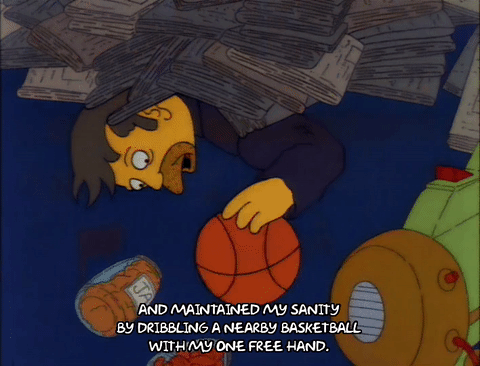In my day-to-day life, I am, on occasion, a little clumsy. I trip on stuff and occasionally fall over. This (mostly) is not what we’re talking about with Apple’s Fall detection that they came out with last year. The Fall detection that Apple is talking about is when you fall over and are unable to get back up.
1) How it works – The mechanics of a fall should be reasonably obvious, but I will say this; if you go from a vertical standing position to suddenly being in a horizontal position on the ground, then the fall detection will kick in. The watch has a sensor inside of it that is triggered by sudden jarring motions. If you go from swinging your arms usually to having a sudden thud and then stay motionless, the watch assumes that you’ve fallen over and gives you a warning of 30 seconds before it calls emergency services for you. From there, you have the ability to press a button on your watch, which is either “I’ve not fallen” or “I fell, but I’m OK.” And either of these will cancel a call to emergency services.
2) Why you should have it on – When I was growing up, there were occasionally the ads for LifeLine (or…” I’ve fallen and I can’t get up!!!”) and so when I talk to people about fall detection, that is the reference that usually comes up. Funnily enough, this is not what I’m talking about. Yes, it does the same thing, but it’s way more sophisticated than that, and it can be way more useful. It’s a great system because if you fall over and cannot respond over a certain period of time, your watch will automatically call first responders on your behalf. I’ve never had the opportunity to try this out (thankfully), but I would imagine if you get “Principle Skinner’d,” then you don’t have to try and bounce a basketball waiting for help to show up.

3) It can be annoying, but it’s easy to live with – There is one small circumstance that I find the fall detection annoying. When you’re building things (like many of us who have bought furniture to improve our homes over the past 20 or so months), and you hammer in nails, the Apple Watch can perceive that as a “fall” and will give you a warning asking what’s going on. I had experienced this multiple times, particularly when I built a set of bookshelves in my home office last year. I would occasionally get prompted asking if I’d fallen, and while there were some “choice words” spoken by me at the time, I think that it’s really easy to deal with when it comes up.
I think that, at the end of the day, this is a tool that we all have access to, which makes our lives just a bit more secure. Indeed, if you live a healthy life and avoid doing risky things, it’s entirely possible that you will never need to use a service like this. Even the fittest person in the world can still fall from some accident. Fall detection is an excellent tool for those who need it, but for those who may not need it, having that function turned on will make it so that if something does go wrong, It would be better to have a tool that is mostly invisible, but when you need it, it makes itself known. I have it turned on, and I would advise that you do the same; you may not need it in your day to life, but when you need it, you will REALLY need it.
Do you have fall detection turned on?
Let me know in the comments section below. If you like this blog post and want to see more, you can follow me on Social Media (LinkedIn, Instagram, and Facebook @jasonlovefiles) or Subscribe to my blog to get new content delivered directly to your mailbox.

